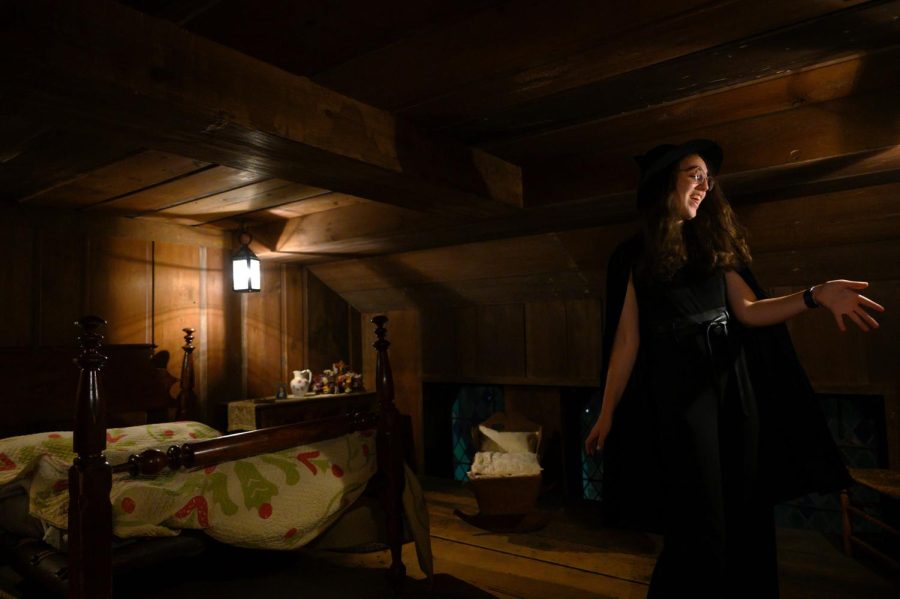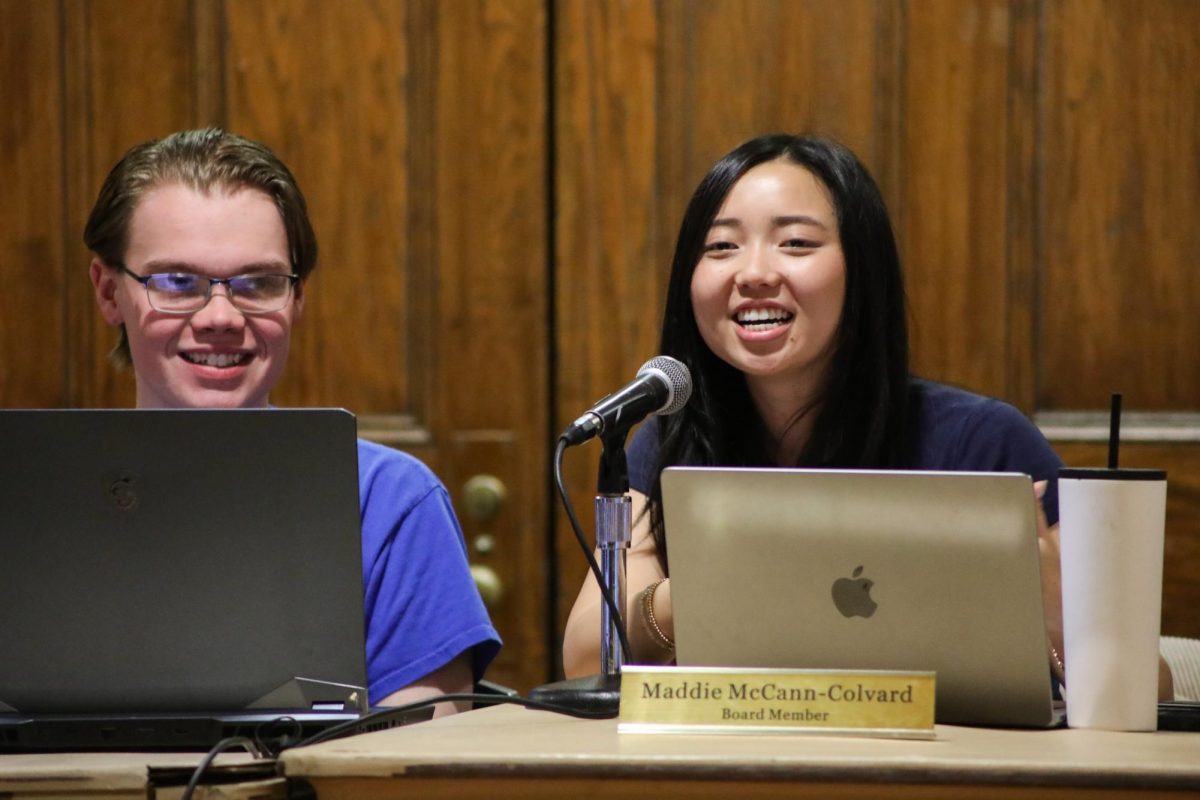Witches, human bones, zombies and more: Student-run program hosts annual Halloween Nationality Room tour
Nate Yonamine | Staff Photographer
Abagail Kraus leads a tour of the Early American nationality room in the Cathedral of Learning on Saturday.
October 24, 2022
In the Ukrainian room, visitors are told a tale of the Baba Yaga, a witch from Slavic folklore who lives in a house with a fence made of human bones. On top of the fence is a row of human skulls with an empty spot on the end, which “Baba Yaga saves for you.”
In the Chinese room, attendees learned how, in Chinese culture, zombies skip with their arms out instead of the traditional slow stalk.
Student-run program Quo Vadis hosted its annual Halloween tour of the Nationality Rooms on Friday and Saturday. Open to the public, the two-hour-long tours allowed the community to get a deeper understanding of 10 of Pitt’s historic Nationality Rooms through historic information and spooky stories.
With costumes ranging from Pixie Hollow fairies to Kuzco from “The Emperor’s New Groove,” all guides dressed for the holiday to get visitors in the Halloween spirit. After educating attendees on the designated Nationality Room, students training as tour guides told a spooky story associated with the nationality.
Doron Loewenberg, a sophomore digital narrative and interactive design and history and philosophy of science double major, said the spooky stories are what make the Halloween tours special.
Loewenberg acted as a “spooky” tour guide for the second floor of the Early American room.
“We want to get people excited about the Nationality Rooms so that they’ll come back and get a proper tour,” Loewenberg said.
Attendees don’t have the chance to see as many rooms as they would in a regular tour, but Loewenberg said that’s more of a reason to come back.
“The organization is dedicated to training and providing tour guides for these rooms specifically. If you want a tour of the entire Pitt campus, go to a Path Finder, but if you want a deep dive into the Nationality Rooms, come to Quo Vadis,” Loewenberg said.
Quo Vadis, Latin for “where are you going,” has provided in-person tours of the Nationality Rooms since 1944.
In addition to being a special Halloween event, the tours also help trainees get familiar with the rooms. Loewenberg said instead of guiding every Nationality Room included in the tour, trainees only cover one room as they gain experience.
“This event helps the trainees practice. They only have to memorize one room, so it lets them get comfortable presenting it.” Loewenberg said.
Abby Mirot, a trainee and a first-year English literature major, said she joined Quo Vadis to learn about the history of the Nationality Rooms. This year, she gave a tour of the Indian Room.
“I was really interested in the history of the rooms and you also learn a lot about the countries just because you’re around the rooms,” Mirot said. “You also meet a lot of really lovely, great people. It feels great to be a part of something that’s so welcoming and nice.”
According to Loewenberg, the trainee process includes memorizing “every aspect of” a 100-page packet on all 31 Nationality Rooms. Students are then tested on this packet and, if they pass, become tour guides for Quo Vadis.
“You don’t put that much effort in unless you truly care about something, and we want people to love these rooms as much as we do.” Loewenberg said.
Adoration for the Nationality Rooms is what brought international students Gayatri Dholakia, a first-year graduate student in human genetics, and Nihal Desai, a first-year graduate student in information science, to the Halloween tours. Before the Halloween event, they had never seen the rooms.
“I wanted to see the whole place because it’s huge. You don’t know where to go but it’s just so intriguing,” Dholakia said. “It’s one way to do something fun and Halloween-y.”
Desai said he had never seen the Nationality Rooms before the Halloween tours, so he was impressed by the learning arrangements of the classrooms and how the rich culture is portrayed and maintained.
“It was really nice seeing the different classrooms from different nationalities,” Desai said. “It’s interesting to learn how the teaching takes place and learning the arrangement in every class. Also the rich culture portrayed and all the different decorations that were in the different rooms.”
The tour finished with the Early American room, specifically the secret second floor. Hidden behind a locked door, a narrow staircase leads to a room containing authentic items owned by Martha Jane Poe, Edgar Allen Poe’s cousin. According to Loewenberg, she haunts the Cathedral.
Dholakia and Desai were happy the tour ended with the Early American room because they found it to be the spookiest part of the tour.
“I think it was amazing that they finished with the most spooky part,” Dholakia said.



